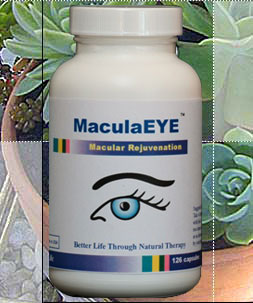A
cataract is when the lens of the eye becomes cloudy. The lens is
responsible for focusing light onto the retina. The reason for
cloudiness could be due to protein changes in the lens.
Three
(3) million Americans have cataract surgery each year. The Federal
government spending $3.4 billion through Medicare to treat cataracts.
1 Recent estimates indicate that approximately 15% of the US population older than age 65 has dry eye.
2
"If you assume that two million cataract patients are older than 65,
and 15% have dry eye, then approximately 300,000 of the patients who
undergo cataract surgery each year will suffer from dry eye."
This represents 750,000 people worldwide.
Why Dry Eyes after Cataract surgery?
Since
majority of the cataracts occur in people who are over 65, they are
also the group that is most prone to have dry eyes due to:
- Aging. – Dry eye is a common condition for people over 50.
- Trauma to the cornea during surgery – creating an uneven surface which causes friction when blinking. Resulting in inflammation and dry eyes.
Preoperative care.
There are 3 important tests to be done to determine if the patient has dry eyes before surgery.
- Rose Bengal Staining,
- Schirmer’s Test ( or Zone Quick) to measure tear volume,
- Tear Breakup Test to measure tear viscosity.
It
would be well advised that patients ask for these tests to be done by
their eye doctors before making a decision to have cataract surgery.
If
dry eyes are detected before surgery, the recommendation is to treat
dry eyes and get the cornea into the best condition it can be to
minimize dry eye outcome after surgery.
Post Operative Care:
After
cataract surgery the signs and symptoms of dry eyes typically get worse. Following surgery, patients are prescribed a number of eye drops, usually a steroid, antibiotic and an NSAID( pain killer) Prolonged use
of postoperative medications may be one of the contributing factors of
the patient's dry eye symptoms. In patients with OSD, it is best to stop
or taper medications when they are no longer needed.
 TheraLife Eye can help
TheraLife Eye can help
Use TheraLife Eye for both pre-operative and post operative care.
 The benefits of TheraLife Eye-
The benefits of TheraLife Eye-
- Effectively relief dry eyes without the use of eye drops and restore cornea to the best health it can be before surgery.
- Post-operatively prevent dry eyes and maintain cornea health through accelerated healing, reduce inflammation, and continue secretion of balanced sustainable tear.
- Avoid the use of steroids and side effects.
Testimonial from our customer
Cataract Induced Chronic Dry Eyes- Relief by TheraLife Eye
After
cataract surgery in 2007. I started having problems with dry eyes. My
doctor prescribed several different types of eye drops, but none were
effective. He then put plugs in my tear ducts, and they became infected
and must be removed. He then suggested that I have my tear ducts
cauterized- I did not feel comfortable about this permanent procedure.
I
then thought about going on the internet and checking what else is
available for dry eyes. Amazon had information on TheraLife Eye that I
found the most interesting. I place an order. Needless to say, I saw a
marked improvement and now I am on a maintenance dose of one capsule at
breakfast and one at dinner. 2 capsules per day. I wouldn’t be without
TheraLife Eye.
B.G, Virginia Beach, VA
 Learn how TheraLife Eye Works
Buy Now
Video
Learn how TheraLife Eye Works
Buy Now
Video

Call a doctor toll free 1-877-917-1989 US and Canada
International (650) 949-6080
Send email inquiry to : info@theralife.com
Follow us at
twitter and
facebook.
REFERENCES
1. Cataract statistics. Located at:
http://www.statisticbrain.com/cataract-statistics/. Accessed 8/1/2012.
2. Nichols KK. Managing surgical patients.
Optometric Management. 2010 Sept.
3. Roberts CW, Elie DR. Dry eye symptoms following cataract surgery.
Insight 2007; 32: 14-21.
4. Movahedan A, Djalilian AR. Cataract surgery in the face of ocular surface disease.
Curr Opin Ophthalmol 2012; 23: 68-82.
5. Luthe R. Dry eye screening and the cataract patient.
Ophthalmology Management, Vol 16; May 2012;48-51.
6. Behrens A, Doyle JJ, Stern L, et al. Dysfunctional tear syndrome: a Delphi approach to treatment recommendations.
Cornea 2006; 25: 900-907.
7. Sanchez MA, Amiola-Villa Lobos P, Torralo-Jimenez P, et al. The
effect of preservative-free HP-Guar on dry eye after
phacoemulsification: a flow cytometric study.
Eye 2010; 24: 1331-1337.
8. Pflugfelder SC. Anti-inflammatory therapy for dry eye.
Am J Ophthalmol 2004; 137: 337-342.
9. Stead RE, Stuart A, Keller J, et al. Reducing the rate of cataract surgery cancellation due to blepharitis.
Eye 2010; 24: 742.
10. Speaker MG, Milch FA, Shah MK, et al. The role of external
bacterial flora in the pathogenesis of acute post-operative
endophthalmitis.
Ophthalmology 1991; 98: 639-649.
11. Luchs L. Efficacy of topical azithromycin ophthalmic solution 1% in the treatment of posterior blepharitis.
Adv Ther 2008; 25: 858-870.
12. Lindstrom, RL. The effects of blepharitis on ocular surgery.
Ocul Surf 2009; 7: 519-520.
13. Cho YK, Kim MS. Dry eye after cataract surgery and associated intraoperative risk factors.
Korean J Ophthalmol 2009; 23: 65-73.
14. Moon SW, Yeom DJ, Chung SH. Neurotrophic corneal ulcer development
following cataract surgery with a limbal relaxing incision.
Korean J Ophthalmol 2011; 25: 210-213.

 How TheraLife Can Help
How TheraLife Can Help Purified Omega 3 Fish Oil
Purified Omega 3 Fish Oil TheraLife MaculaEye
TheraLife MaculaEye






